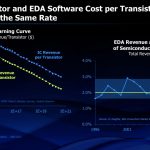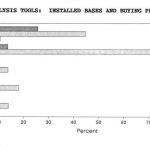You are currently viewing SemiWiki as a guest which gives you limited access to the site. To view blog comments and experience other SemiWiki features you must be a registered member. Registration is fast, simple, and absolutely free so please,
join our community today!
This is the nineteenth in the series of “20 Questions with Wally Rhines”
When I moved from the semiconductor industry to Mentor, I expected most of my technology and business experience to apply similarly in EDA software. To some extent, that was correct. But there was a fundamental difference that required a change… Read More
This is the seventeenth in the series of “20 Questions with Wally Rhines”
Several common aspects have existed for what is now the modern Electronic Design Automation (EDA) industry. When I joined TI in 1972, the company was very proud of its design automation capability as a competitive differentiator. Much of the… Read More
This is the sixteenth in the series of “20 Questions with Wally Rhines”
Electronic design automation (EDA) began and grew with the integrated circuit (IC) design business probably because IC design grew in complexity faster than printed circuit boards. The race for superiority in PCB design evolved in parallel,… Read More
This is the fifteenth in the series of “20 Questions with Wally Rhines”
During 1980 and 1981, three companies, Daisy, Mentor and Valid were founded. Daisy and Valid attacked the computer automated design business with custom hardware workstations plus software to provide the unique capabilities required by engineers.… Read More
Business models are really important. Just ask any internet startup company that has lots of eyeballs and is trying to work out how to monetize them. It is a lot easier to get people to use something for free, much harder to get people to pay for something especially when they don’t value it much. Different companies that look… Read More





